Histones activate the NLRP3 inflammasome in Kupffer cells during sterile inflammatory liver injury
- PMID: 23904166
- PMCID: PMC3777242
- DOI: 10.4049/jimmunol.1202733
Histones activate the NLRP3 inflammasome in Kupffer cells during sterile inflammatory liver injury
Abstract
Cellular processes that drive sterile inflammatory injury after hepatic ischemia/reperfusion (I/R) injury are not completely understood. Activation of the inflammasome plays a key role in response to invading intracellular pathogens, but mounting evidence suggests that it also plays a role in inflammation driven by endogenous danger-associate molecular pattern molecules released after ischemic injury. The nucleotide-binding domain, leucine-rich repeat containing protein 3 (NLRP3) inflammasome is one such process, and the mechanism by which its activation results in damage and inflammatory responses following liver I/R is unknown. In this article, we report that both NLRP3 and its downstream target caspase-1 are activated during I/R and are essential for hepatic I/R injury, because both NLRP3 and caspase-1 knockout mice are protected from injury. Furthermore, inflammasome-mediated injury is dependent on caspase-1 expression in liver nonparenchymal cells. Although upstream signals that activate the inflammasome during ischemic injury are not well characterized, we show that endogenous extracellular histones activate the NLRP3 inflammasome during liver I/R through TLR9. This occurs through TLR9-dependent generation of reactive oxygen species. This mechanism is operant in resident liver Kupffer cells, which drive innate immune responses after I/R injury by recruiting additional cell types, including neutrophils and inflammatory monocytes. These novel findings illustrate a new mechanism by which extracellular histones and activation of NLRP3 inflammasome contribute to liver damage and the activation of innate immunity during sterile inflammation.
Figures

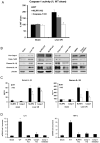
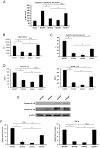

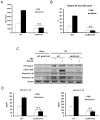

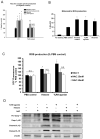

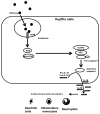
Similar articles
-
NLRP3 regulates neutrophil functions and contributes to hepatic ischemia-reperfusion injury independently of inflammasomes.J Immunol. 2014 May 1;192(9):4342-51. doi: 10.4049/jimmunol.1302039. Epub 2014 Apr 2. J Immunol. 2014. PMID: 24696236
-
Activation of NLRP3 and AIM2 inflammasomes in Kupffer cells in hepatic ischemia/reperfusion.FEBS J. 2015 Jan;282(2):259-70. doi: 10.1111/febs.13123. Epub 2014 Nov 14. FEBS J. 2015. PMID: 25327779
-
Damage-associated molecular pattern-activated neutrophil extracellular trap exacerbates sterile inflammatory liver injury.Hepatology. 2015 Aug;62(2):600-14. doi: 10.1002/hep.27841. Epub 2015 May 29. Hepatology. 2015. PMID: 25855125 Free PMC article.
-
The Role of NLRP3 Inflammasome Activation Pathway of Hepatic Macrophages in Liver Ischemia-Reperfusion Injury.Front Immunol. 2022 Jun 10;13:905423. doi: 10.3389/fimmu.2022.905423. eCollection 2022. Front Immunol. 2022. PMID: 35757691 Free PMC article. Review.
-
Regulation and Function of the Nucleotide Binding Domain Leucine-Rich Repeat-Containing Receptor, Pyrin Domain-Containing-3 Inflammasome in Lung Disease.Am J Respir Cell Mol Biol. 2016 Feb;54(2):151-60. doi: 10.1165/rcmb.2015-0231TR. Am J Respir Cell Mol Biol. 2016. PMID: 26418144 Free PMC article. Review.
Cited by
-
Olaparib, a PARP-1 inhibitor, protects retinal cells from ocular hypertension-associated oxidative damage.Front Cell Dev Biol. 2022 Aug 26;10:925835. doi: 10.3389/fcell.2022.925835. eCollection 2022. Front Cell Dev Biol. 2022. PMID: 36092711 Free PMC article.
-
Extracellular histones are clinically associated with primary graft dysfunction in human liver transplantation.RSC Adv. 2019 Apr 1;9(18):10264-10271. doi: 10.1039/c9ra00425d. eCollection 2019 Mar 28. RSC Adv. 2019. PMID: 35520915 Free PMC article.
-
The Role of Extracellular DNA and Histones in Ischaemia-Reperfusion Injury of the Myocardium.Cardiovasc Drugs Ther. 2020 Feb;34(1):123-131. doi: 10.1007/s10557-020-06946-6. Cardiovasc Drugs Ther. 2020. PMID: 32062794 Free PMC article. Review.
-
Hepatic Surgical Stress Promotes Systemic Immunothrombosis That Results in Distant Organ Injury.Front Immunol. 2020 May 22;11:987. doi: 10.3389/fimmu.2020.00987. eCollection 2020. Front Immunol. 2020. PMID: 32528475 Free PMC article.
-
Histones as mediators of host defense, inflammation and thrombosis.Future Microbiol. 2016;11(3):441-53. doi: 10.2217/fmb.15.151. Epub 2016 Mar 4. Future Microbiol. 2016. PMID: 26939619 Free PMC article. Review.
References
Publication types
MeSH terms
Substances
Grants and funding
LinkOut - more resources
Full Text Sources
Other Literature Sources
Molecular Biology Databases

